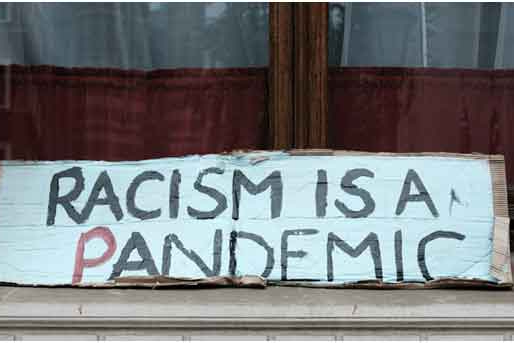
Colorblind Justice: The War on Racial Inequality
22 Nov, 2023 Posted By - Heather ButlerHow would you feel if you were not given an equal chance for an opportunity you’re fully qualified for? And while finding the reason, you get to know it’s because of your race or skin color.
How frustrating and infuriating that would be. Sadly, this is what Samuel is facing at his workplace.
Racial discrimination has been deeply rooted in the West for a long time; although the severity has decreased over the years, it’s still prevalent at work, schools, and other public spaces. The intolerance and lack of respect for diverse groups often take the form of microaggressions, racial slurs, and hate speech.
As discussed in the book Travesty of Justice by Heather Butler, Ethnic groups and minorities have been suffering at the hands of this prejudice for years, which has resulted in them feeling powerless and unheard of as a community. They are deprived of exercising their right as a free individual, hindering their access to work, education, and health services. Heather Butler has beautifully encapsulated the disparities inherent within the social system, such as racial inequality, micro-aggression, and intolerance of diversity.
Systemic racism has slowly penetrated every public and private sector, where institutions constantly penalize and exploitnon-white groups. Not only that, but they also don’t get equal organizational, promotional, and recruitment opportunities like the majority group.
Motivated by malice and hatred, racial discrimination means differential behavior based on race. That’s the colorblind nature of this world. It only recognizes and provides rights to a particular group of people.
This blog will discuss strategies to eliminate racial inequality at work and in public spaces.
Build a Consensus
To analyze if racism is a problem in the workplace, you need to have employee feedback on the matter. Usually, managerial-level employees do not acknowledge racism based on color. However, the primary workforce can comment on it in a better way. Once you have enough information and feedback, try using it to organize diversity initiatives, awareness campaigns, and counseling sessions.
Get Everyone On the Same Page
People of color are more prone to harsh treatment than white people when voicing their concerns. It’s essential to have a collective agreement on racial equity in the workplace. It can be done by explaining the reality and severity of the problem, suggesting possible solutions, and then collecting people’s feedback on it.
Find the Best Solution
Establishing racial equity is a fundamental step toward employee welfare and protection. As intractable as it seems, it can be solved with proper root cause analysis. Exposure and empathy can be utilized by restructuring actionable areas of an institution, such as institutional policies and informal work culture norms. Taking immediate action and calling out the perpetrators are effective remedies to fight this unjustifiable social behavior. Usually, this bias does not come personally. It’s a socially programmed mindset adapted by many majorities.
Reinforcement
There are ample ways to implement racial acceptance at the cultural, educational, and institutional levels. Expand your network to partner with organizations and start-ups that can share ideas and practices to promote diversity—also establishing inclusive recruitment practices and online diversity training to strengthen interactions in the workplace.
The Bottom Line
Navigating social injustice is like walking into a labyrinth without an exit. It’s like a suffocating terrain of ambitions and dreams all dying down after a long struggle. The harsh reality is that the system is unfair and does not give an equal chance to everyone. Heather Butler also went through a similar pattern of injustice, which she tells in Nicole and Samuel’s story. The book chronicles the story of an interracial romance that is affected deeply by discrimination and the lack of equal opportunity. Find out more about them in Travesty Of Justice, by Heather Butler, now on Amazon.